Pruning rose bushes: [Reasons, Season, Tools and Steps to follow]
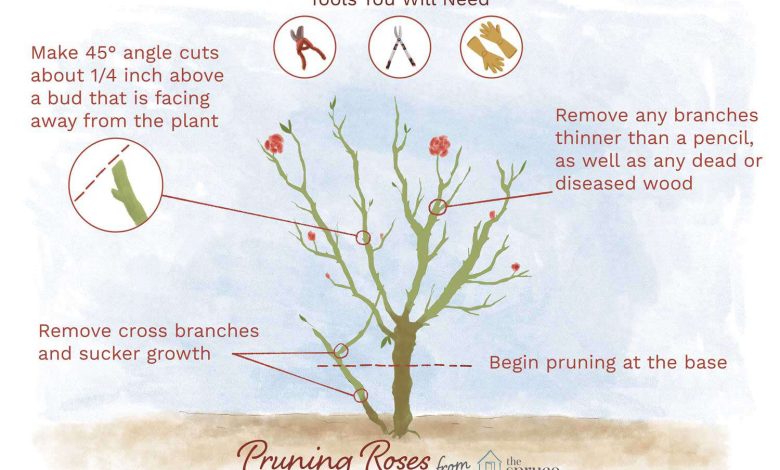
Pruning rose bushes is a practice that allows them to look more full of life and increase their resistance.
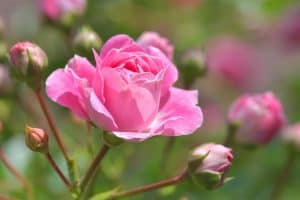 However, its practice must be carried out under a certain number of recommendations to avoid negative results.
However, its practice must be carried out under a certain number of recommendations to avoid negative results.
In this guide we are going to detail everything you need to know so that you have the most beautiful rosebushes in your entire area, so let’s get started.
Why should we do pruning rose bushes?
 Pruning rose bushes is a practice that makes it easier for the plant to concentrate its energies in fewer areas and thus improve the visual aspect in general. This action contributes to obtaining flowers with greater showiness.
Pruning rose bushes is a practice that makes it easier for the plant to concentrate its energies in fewer areas and thus improve the visual aspect in general. This action contributes to obtaining flowers with greater showiness.
Correct pruning stimulates the health of the plant, since it helps its interior to have access to sunlight and allows good air circulation.
And, although it may not seem like it, pruning at the right time will allow it to grow faster according to our objectives. In terms of health, pruning allows you to eliminate all those parts that are not in optimal condition and that disfigure and can make the plant sick.
When to carry out the pruning of rose bushes?
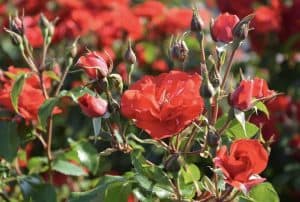 The favorite time to carry out this action is in spring, in the middle, when there is no longer any risk of frost.
The favorite time to carry out this action is in spring, in the middle, when there is no longer any risk of frost.
It is also important to give the plant a chance to heal the wounds before the cold weather arrives.
Pruning should be completed in late summer, but only to remove wilted or dead parts of the plant.
However, around the age of the plant, a rosebush should only be pruned when it is over a year old and has given its first flowering. This has the purpose that it can take root well and be much more strengthened.
What should we take into account before doing it?
The first thing we must take into account is that an annual pruning is more than enough.
The type of cut is also a matter of care because it must be done with some degree of inclination to prevent irrigation water from accumulating in the wound.
What tools do we need for pruning rose bushes?
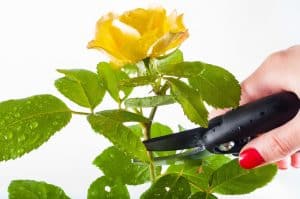 To prune a rose you have to use the correct tools so that the cuts can be made quickly and are clean.
To prune a rose you have to use the correct tools so that the cuts can be made quickly and are clean.
The scissors are our best support and there are those intended for thin branches and those that work better with thick branches.
You should always be aware that they are well sharpened to ensure that the cut is made after a single pressure and not having to pull.
In addition to that, we must make sure that they are well disinfected, especially if they are also used for other plants. This process should be executed, both at the time of completing a previous job, and to start a new one.
How to prune a rosebush step by step?
 Knowing the correct process for pruning rose bushes is something that will prevent us from losing the beauty of this bush and will prevent it from suffering.
Knowing the correct process for pruning rose bushes is something that will prevent us from losing the beauty of this bush and will prevent it from suffering.
An action that is very common around this matter and that has nothing to do with the pruning process itself, is the extraction of flowers.
This process is simple and will only consist of removing the stem that joins the flower with the rest of the plant, so that the complete piece is obtained.
This action is executed for the purpose of selling flowers or making internal arrangements for home decoration. Now, in the case of pruning as such, we will proceed as follows:
- Disinfect the scissors and ensure that they have an appropriate sharpness, as we mentioned above.
- Remove all parts of the plant that have a bad appearance, such as withered leaves or inappropriate colors.
- cut all suckers. These are small bumps that usually arise at different points on a stem, but are not part of the strong structure of the plant.
- From the strong branches of the plant, about 5 buds should be counted and proceed to cutting afterwards. This action will ensure that too many more do not grow and that you can concentrate the energy in certain areas.
- When the branches are very young, point 4 will not be treated with 5 buds but up to 3.
- Ideally, afterward, apply some healing to help them recover more quickly.
It is important to note that each type of rose bush has its own considerations regarding the pruning system to apply. For example, climbing roses need to be pruned from a young age to prevent them from covering unauthorized areas.
Also, when the rose bushes are old, the best idea is to only prune to remove the affected parts and not as a strategy for flowering. There are many species that require pruning and rose bushes are one of them, so we must do it and do it very well.
Bibliography and references
- Buczacki, Stefan. (1999). Prune. Tursen-Hermann Blume. Madrid Spain.
- Buczacki, Stefan. (nineteen ninety six). Rosales. Tursen-Hermann Blume. Madrid Spain.
- Yong, Anya. (2004). Techniques of formation and management of the rosebush. Tropical crops. National Institute of Agricultural Sciences. Havana Cuba. Reproduced from: https://www.redalyc.org/pdf/1932/193225911005.pdf
- Oregon State University. Extension Service McNeilan, Ray A. (2001). The pruning. Oregon-United States. Reproduced from: https://ir.library.oregonstate.edu/downloads/6q182k274
- Gostinchar, Juan. (1954). Rose cultivation. Department of agriculture. Madrid Spain. Reproduced from: https://www.mapa.gob.es/ministerio/pags/biblioteca/hojas/hd_1954_13.pdf

![Photo of Maritime Cineraria: [Characteristics, Care, Planting, Pruning and Problems]](https://www.complete-gardening.com/wp-content/uploads/2022/08/maritime-cineraria-characteristics-care-planting-pruning-and-problems-390x220.jpg)
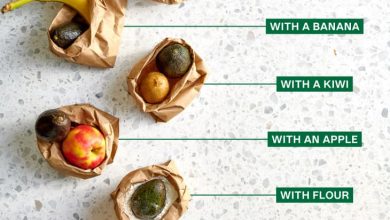

![Photo of Domestic Nandina: [Cultivation, Care, Pests and Diseases]](https://www.complete-gardening.com/wp-content/uploads/2022/08/domestic-nandina-cultivation-care-pests-and-diseases-390x220.jpg)